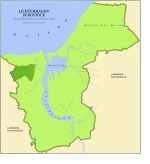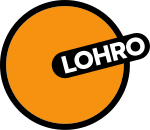St. Mary's Church, Rostock
Brick GothicGothic architecture in GermanyLutheran churches converted from Roman CatholicismLutheran churches in RostockTourist attractions in Rostock

St. Mary's Church, Rostock, in German Marienkirche, is the biggest of three town churches found in the Hanseatic city of Rostock, in northern Germany. The other two are St. Peter's (Petrikirche) and St. Nicholas (Nikolaikirche). A fourth, St. James' (Jakobikirche), was heavily damaged during the Second World War and subsequently demolished. St. Mary's was designated in 1265 as the main parish church. Since the Protestant Reformation in 1531, it houses a congregation of the Evangelical Lutheran State Church of Mecklenburg.
Excerpt from the Wikipedia article St. Mary's Church, Rostock (License: CC BY-SA 3.0, Authors, Images).St. Mary's Church, Rostock
Lange Straße, Rostock Stadtmitte (Ortsbeirat 14 : Stadtmitte)
Geographical coordinates (GPS) Address Nearby Places Show on map
Geographical coordinates (GPS)
| Latitude | Longitude |
|---|---|
| N 54.09 ° | E 12.139 ° |
Address
Lange Straße 19
18055 Rostock, Stadtmitte (Ortsbeirat 14 : Stadtmitte)
Mecklenburg-Vorpommern, Germany
Open on Google Maps











